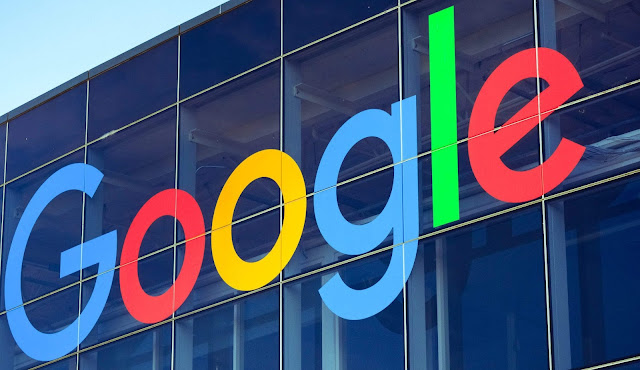 |
| Google Logo |
The story of Google begins with its two co-founders, Larry Page and Sergey Brin, who met at Stanford University in 1995 while pursuing their Ph.D. degrees in computer science. The two young students shared a passion for technology and a vision of organizing the vast amount of information available on the internet in a more efficient and user-friendly manner.
In
January 1996, Larry Page and Sergey Brin began collaborating on a research
project called "BackRub," which aimed to develop a search engine that
ranked websites based on the number and importance of backlinks they received
from other websites. This algorithm was revolutionary at the time, as most
search engines primarily ranked websites based on keyword frequency.
By
1998, the project had evolved significantly, and Larry and Sergey decided to
formalize their efforts by incorporating a new company called Google, a play on
the word "googol" – a mathematical term representing a 1 followed by
100 zeros, signifying the immense volume of information Google intended to
index and organize.
On
September 4, 1998, Google became officially incorporated, and the website
domain "google.com" was registered. The company initially operated
out of a garage in Menlo Park, California, which later became known as the
"Google Garage."
Google
quickly gained popularity due to its accurate search results and the simplicity
of its user interface. As the search engine's popularity grew, it attracted
significant attention from investors, leading to a $100,000 investment from Andy
Bechtolsheim, a co-founder of Sun Microsystems.
In
1999, Google moved its offices to a larger space in Palo Alto, California, and
continued to refine its search algorithm while also expanding its services and
offerings. It introduced the Google Toolbar, which integrated with popular web
browsers, making it easier for users to access Google search.
The
turning point for Google came in the early 2000s when it secured a crucial
partnership with Yahoo to power its search results. This exposure to millions of
Yahoo users significantly boosted Google's user base and revenue.
In
2004, Google held its initial public offering (IPO) under the ticker symbol
"GOOG" on the NASDAQ stock exchange, raising over $1.6 billion and
valuing the company at around $23 billion. The IPO made Larry Page and Sergey
Brin billionaires and solidified Google's position as a major player in the
tech industry.
Over
the years, Google expanded its services, launching products like Google Maps,
Google News, Google Images, Google Translate, and Gmail, among many others. It
also acquired several companies, including YouTube, Android (the company behind
the popular mobile operating system), and DoubleClick (an online advertising
company).
In
2015, Google underwent a corporate restructuring, creating a new holding
company called Alphabet Inc. Google became a subsidiary of Alphabet, and Larry
Page stepped down as Google's CEO, handing over the reins to Sundar Pichai.
Under
Alphabet, Google continued to grow and diversify its business, investing in
various areas such as artificial intelligence, cloud computing, self-driving
cars, and healthcare initiatives. It also faced its fair share of challenges,
including antitrust investigations and concerns over user data privacy.
Despite
the challenges, Google remained one of the world's most influential and
valuable companies, with a vast array of services and products that have become
an integral part of daily life for billions of people around the globe.
As of
my last knowledge update in September 2021, Google remains a dominant force in
the technology industry, and its journey continues as it explores new
innovations and endeavors to shape the future of technology and information
accessibility. Please note that developments may have occurred beyond my last
update, so it's a good idea to check more recent sources for the latest
information.
As
Google continued to evolve, it faced increasing competition from other tech
giants and smaller startups. Companies like Microsoft's Bing and Apple's Siri
posed challenges in the search and virtual assistant domains, respectively.
Google responded by investing heavily in research and development, staying at
the forefront of innovation.
One of
Google's most ambitious projects was its foray into the world of mobile
technology with the Android operating system. Android, acquired by Google in
2005, became the most widely used mobile operating system globally. It powered
a vast array of smartphones and tablets, giving Google a strong foothold in the
mobile market.
In
2016, Google introduced its own hardware line, "Pixel," comprising
smartphones, laptops, and smart speakers. The Pixel phones showcased Google's
latest Android software and served as a flagship product for its ecosystem.
Another
significant area of expansion for Google was cloud computing. Google Cloud
Platform (GCP) became a major competitor to Amazon Web Services (AWS) and
Microsoft Azure, offering a range of cloud services to businesses and
developers.
In the
field of artificial intelligence (AI), Google made remarkable strides. Its
research arm, Google AI, contributed to advancements in natural language
processing, computer vision, machine learning, and robotics. The company
integrated AI capabilities into various products and services, enhancing user
experiences.
Google's
commitment to the environment and sustainability was evident through its
numerous green initiatives. It invested in renewable energy projects, aiming to
power its operations with 100% clean energy. The company also advocated for
environmental responsibility throughout its supply chain.
Privacy
and data security remained ongoing concerns for Google and its users. The
company faced scrutiny and legal challenges over data handling practices and
the use of personal information for targeted advertising. As a response, Google
introduced various privacy tools and settings to provide users with more
control over their data.
Despite
the challenges, Google continued to explore ambitious projects. One such
endeavor was the development of self-driving cars under the "Waymo"
brand. Google's autonomous vehicle technology aimed to revolutionize
transportation and reduce road accidents.
Over
time, Google expanded its geographical presence, opening offices and data
centers worldwide. The company also made efforts to connect the unconnected
through initiatives like "Project Loon," which aimed to provide
internet access to remote and underserved areas using high-altitude balloons.
Beyond
its core businesses, Google pursued "moonshot" projects through its
research and development subsidiary, X (formerly known as Google X). X focused
on tackling global challenges with radical technological solutions, such as
Project Wing (drone delivery) and Project Loon.
As of
my last update in September 2021, Google's impact on technology, information
access, and daily life was profound. Its search engine was one of the most
widely used tools globally, and its products and services were deeply integrated
into the digital landscape. The company's commitment to innovation and its
diverse range of projects made it a driving force in the tech industry.
Bear in mind that technological landscapes are
ever-changing, and Google's journey likely continued with new developments,
acquisitions, and innovations. To stay up-to-date with the latest information
on Google, I recommend referring to more recent sources and news updates.
